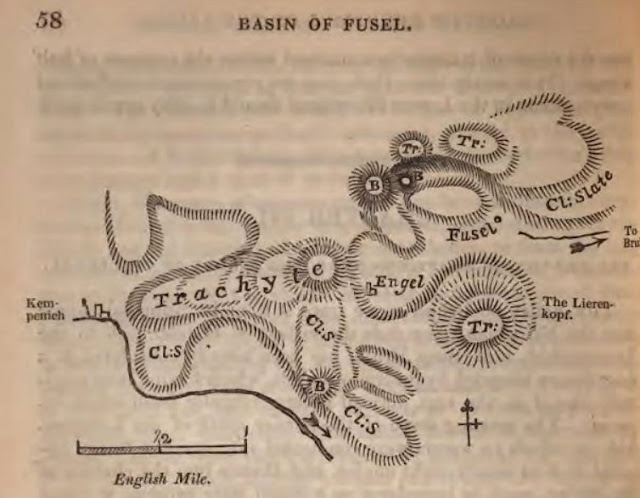Loess people are interested in Charles Lyell because, in 1833, he described the Rhine loess in volume 3 of the Principles of Geology, and thus made loess known around the world.. Lyell lived and worked in the so-called Romantic epoch, he played a part in changing the way in which we see the world; he was part of a great movement of writers and scientists which made the modern world. People like Humphrey Davy were inventing science (William
Whewell was naming it); Lyell was inventing modern geology. Lyell was part of this Romantic community- so were Mary Somerville(above) and Sam.Coleridge, and many others and lesser lights like Poulet Scrope and Leonard Horner and Sam.Hibbert.
Sources: Michael Ferber 2010, Romanticism: A Very Short Introduction, Oxford University Press, 148p:
"Most of the Romantics ... saw in the latest discoveries of science a confirmation of their intuition that deep within the natural world and deep within their souls was a living bond, and that in certain heightened states of mind they could understand the language nature spoke."
Sources: Richard Holmes 2008, The Age of Wonder: How the Romantic Generation discovered the Beauty and Terror of Science, published by Harper in 2008, paperback in 2009. This is what Oliver Sacks said about the book:
"I am a Richard Holmes addict. He is an incomparable biographer, but in The Age of Wonder, he rises to new heights and becomes the biographer not of a single figure, but of an entire unique period, when artist and scientist could share common aims and ambitions and a common language- and together create a 'romantic', humanist science. We are once again on the brink of such an age, when science and art will come together in new and powerful ways."
Whewell was naming it); Lyell was inventing modern geology. Lyell was part of this Romantic community- so were Mary Somerville(above) and Sam.Coleridge, and many others and lesser lights like Poulet Scrope and Leonard Horner and Sam.Hibbert.
Sources: Michael Ferber 2010, Romanticism: A Very Short Introduction, Oxford University Press, 148p:
"Most of the Romantics ... saw in the latest discoveries of science a confirmation of their intuition that deep within the natural world and deep within their souls was a living bond, and that in certain heightened states of mind they could understand the language nature spoke."
Sources: Richard Holmes 2008, The Age of Wonder: How the Romantic Generation discovered the Beauty and Terror of Science, published by Harper in 2008, paperback in 2009. This is what Oliver Sacks said about the book:
"I am a Richard Holmes addict. He is an incomparable biographer, but in The Age of Wonder, he rises to new heights and becomes the biographer not of a single figure, but of an entire unique period, when artist and scientist could share common aims and ambitions and a common language- and together create a 'romantic', humanist science. We are once again on the brink of such an age, when science and art will come together in new and powerful ways."
Humphry Davy
Sources: Romantic Circles www.rc.umd.edu : Romantic Circles is an academic peer-reviewed website dedicated to the study of Romantic literature and culture. It is published by the University of Maryland and supported by the Maryland Institute for Technology in the Humanities MITH, and the English Departments of Loyala University Chicago and the University of Maryland. Loess makes an appearance on Romantic Circles via their publication of the Map from Sam.Hibbert's book on the Volcanos of the Eifel Region. The book included, as a frontispiece a map of the Eifel region drawn by Charlotte Hibbert. We believe that this might be the first geological map to show loess (published in 1832); the map is reproduced by Romantic Circles and is available on the website..






















